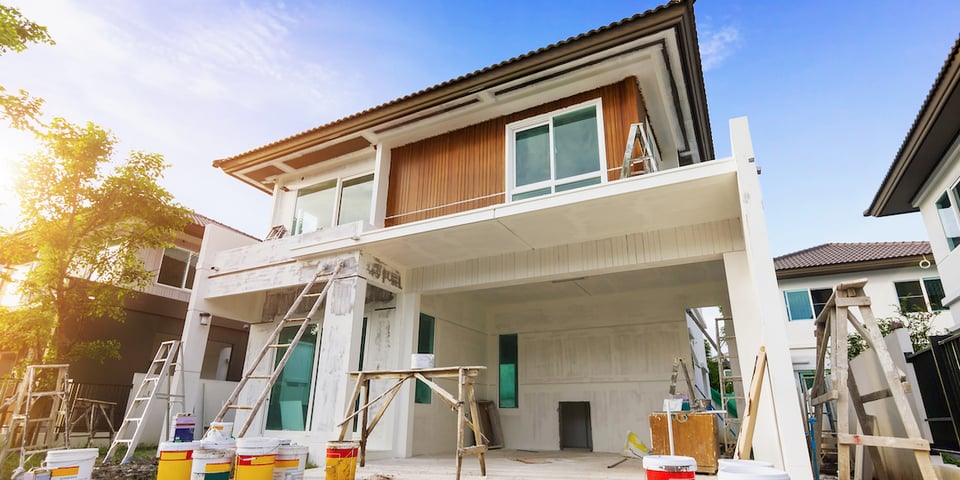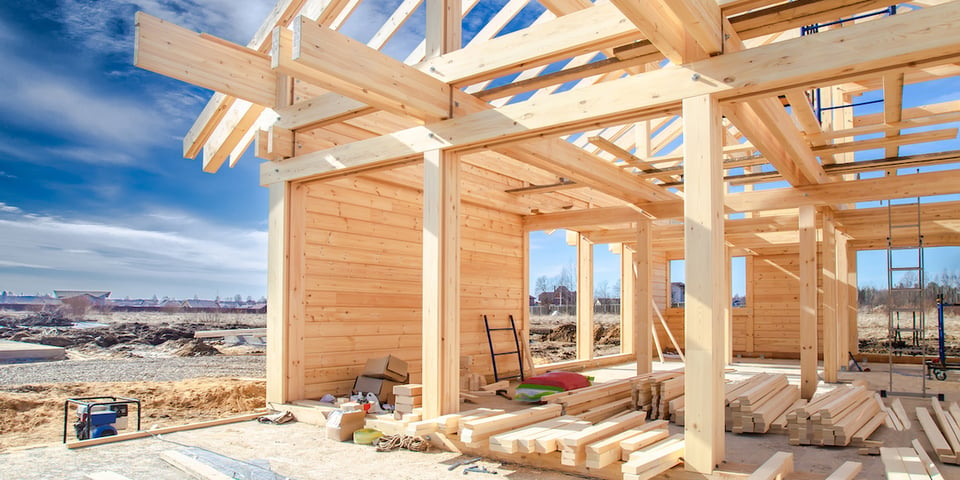Residential construction loans can be rife with mistakes that result in costly delays and budget overruns—in most cases, due to inexperience and overlooked details. For a fiercely competitive market such as California, avoiding missteps requires diligent planning at every stage of construction to ensure your real estate investment yields your desired outcome.
Residential Construction in California
While residential rehab and new development projects can be highly profitable, the higher costs of construction and materials in California may impact how far your budget will stretch. An increasing number of wildfires and earthquakes in the state has also raised the level of risk associated with real estate, creating a challenging insurance dynamic. When compounded by limited inventory, the property market in California has become highly competitive.
These concerns for residential real estate construction aren’t exclusive to California, but combined, they have the potential to impact loan financing and resale timelines, eroding profits. Thorough research and analysis of the market to understand the risks—and rewards—will be essential for successful outcomes. This will place you in a position to inspire confidence with lenders by demonstrating due diligence and strategies to mitigate risk in a well-written proposal.
8 Common Mistakes with Residential Construction Loans in California
Before you rush into financing, it’s important to recognize where costly errors with residential construction loans in California are most likely to occur. Remember that construction loans are disbursed as the project progresses, so if you aren’t prepared to carefully manage cash flow, delays or cost overruns can leave you in a bind.
1. Working with Conventional Lenders
Loan terms with banks are very strict, especially for new construction. After jumping through hoops to close, if the draw schedule holds up kickoff or cash doesn’t come through when planned, the financial consequences will cascade across your project.
2. Underestimating Time to Complete Construction
Miscalculating the schedule will impact the distribution of your loan, interest payments, and the cost to complete the project. Delays, from permitting issues to inclement weather conditions, can occur at every stage. If you don’t have sufficient interest reserves built into your loan, you will be responsible for making the payments out of pocket.
3. Failing to Account for Seasonal Risks
Weather and climate conditions at the time of construction cannot be overlooked. Events such as hurricanes, tropical storms, and wildfires due to drought can derail the construction schedule or even sink an entire project. Think about when to start the project based upon the seasonality of your market and at what stage the house will be in during the rough season (will the roof be on when the rain/snow comes)?
Make sure you have adequate insurance in place for these potential risks. If your property lies in a flood zone, the lender will also require flood insurance during the project to protect their interest against flood damage.
4. Budgeting for Preferred Materials over Available Materials
Locking the project into a specific appliance model, brand of flooring, or otherwise aspirational choice is impractical. Waiting six months for materials to arrive creates unnecessary delays that come at the cost of interest and keeping the project on time. There are often trade-offs in a construction project, so you will need to be flexible and have alternative options with materials and suppliers.
5. Neglecting to Negotiate
It can cost thousands of dollars to accept quotes without negotiation. Builders and subcontractors often have room to provide price optionality. Discuss your options before entering into a contract. But lowest price doesn't always mean best decision. Ensure whomever you decide to go with has impeccable references building similar type projects.
6. Not Using Local Vendors
Contracting trades and architects from outside the regional market of your project can result in failing to follow local specifications and building codes. If the work won’t pass inspection, the cost to correct it can be very expensive.
7. Selecting Lots Indiscriminately
Purchasing without researching the property’s title for liens or encumbrances or evaluating conditions of the neighborhood is effectively building in the dark. Do your homework and talk with the local planning department. Talk with local Realtors. Review the title report for easements or encumbrances that might be an obstacle to building what you want.
8. Neglecting Thorough Site Inspection
Not investigating the whole site before you lay out your plan leaves room for surprises, along with permitting holdups and time-consuming changes mid-project. Height restrictions, minimum setbacks, access to public water and sewer systems are all conditions that need to be reviewed and considered. The planning department can help identify construction challenges with your preferred site.
Best Practices for California Construction Financing
Taking into account where mistakes are most likely to occur, let’s cover what you can do for proactive planning on your next build.
Considering Alternative Financing for Competitive Terms
Hard money lenders are regulated differently than banks, which might allow them to set more flexible borrower requirements, close loans quickly, and get creative with structuring the deal.
Securing a Construction Loan with Realistic Terms
Residential construction loans in California usually follow an interest-only payment schedule during construction. Resist the temptation to take the shortest term possible to save money. If you encounter any delays, it will place you in a compromising financial position.
Work with an experienced residential construction lender to ensure your loan schedule is right for the type of build and leaves room for reasonable delays.
Aligning Construction Schedule with Anticipated Conditions
Strike a practical balance between starting the job as quickly as possible and avoiding chances of disruptions to the build. If disruptions or delays are unavoidable, plan for plenty of buffer room in your timeline.
Including a Contingency Line in Your Budget
This will allow for unexpected, sudden changes, such as materials and labor costs, and demonstrate strategic planning in your loan application. Most construction loans have a contingency budget of 5-10% of the total hard costs.
Finding Reliable Local Specialists
Local architects, contractors, and specialists who are familiar with the market will be able to offer the expertise needed to inform a realistic plan from your budget and build schedule. They can also help with competitive sourcing of materials for better cost management.
Researching the Market
Get to know the specifics of the market, from municipal ordinances and building codes to who is buying there and what they’re looking for. This will prepare you to navigate permitting.
Conducting a Full Site Inspection
Site conditions can be deceptive at a glance, so be sure to inspect thoroughly before proceeding with your construction plan. A survey and soils test are often good third-party reports to help review for potential problems.
Coordinating with Utility Companies Before You Break Ground
Don’t wait until you’re up against the clock to find yourself relying on the availability of utilities. Prioritize getting on their schedule before your whole project is indefinitely on hold. This is especially true with current projects these days. Power hookup has caused a tremendous amount of time delays, which translate into additional interest expense.
Build for Success with Herzer Financial Services
Avoiding pitfalls in California construction financing comes down to meticulous planning. An experienced private residential construction lender will guide you through the process for successful outcomes. For a deep dive into doing it right, read Fast-Track Success: How to Build Spec Homes for Profit.





